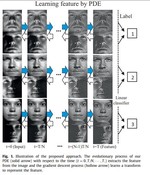Biography
I will be an assiaiant Professor at Peking Univeristy soon. I am now a postdoctoral researcher at University of Pennsylvania, hosted by Prof. Weijie Su and Qi Long. I was a postdoctoral researcher at Princeton University in 2019, hosted by Prof. Jason D. Lee. I also work closely with Prof. Tong Zhang at HKUST. I received my Ph.D. at Peking Univerity, advised by Prof. Zhouchen Lin.
I work on the foundation of machine learning. My research interests are broadly in machine learning algorithms and theory. I am hiring self-motivated Ph.D. and interns who have great interests in theory about machine learning to work with me (at PKU). Please see more information about me and the position on my homepage: https://congfang-ml.github.io/.
Interests
- Machine Learning
- Optimization
Education
-
Ph.D. in Computer Engineering, 2014-2019
Peking University










